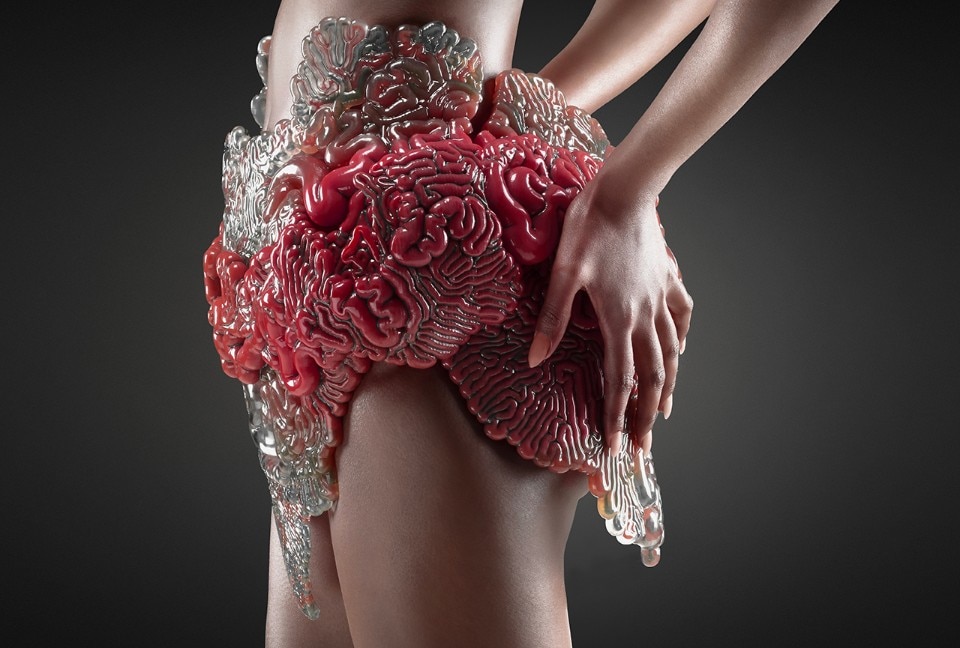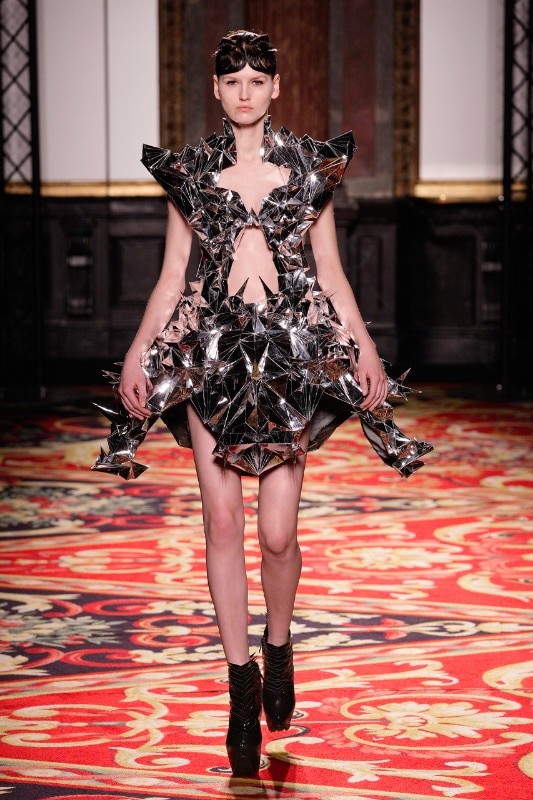You can read the full article on the Innovation issue, the supplement of Domus 1021, March 2018.
The first investigators of the relation between materials, body and technology were two great fashion designers: Issey Miyake with his A-POC system (A Piece of Cloth, 1997), a combination of fashion and engineering, and Hussein Chalayan. Both have been constructing an original relation between clothing and body that alludes to a world where technology has a central role, even when that technology is hidden. As we are immersed in digital technology, its mixture with the biological world builds a space for research where hybridisation is produced.
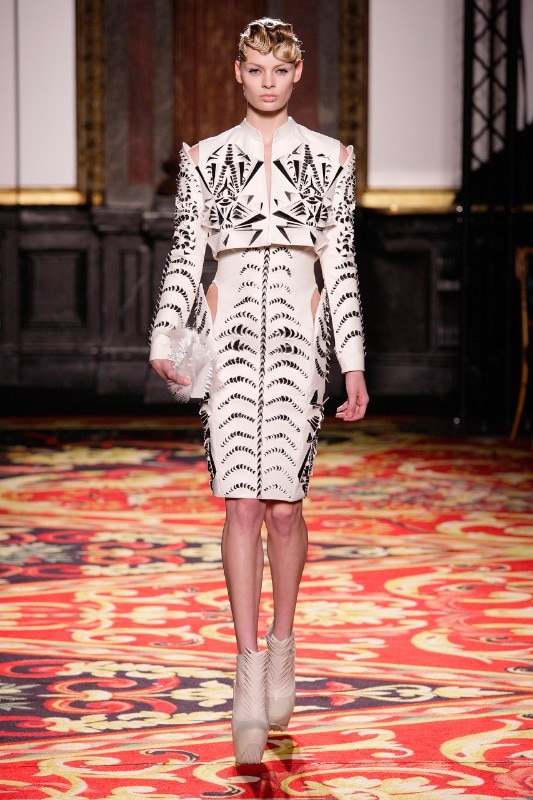
 View gallery
View gallery

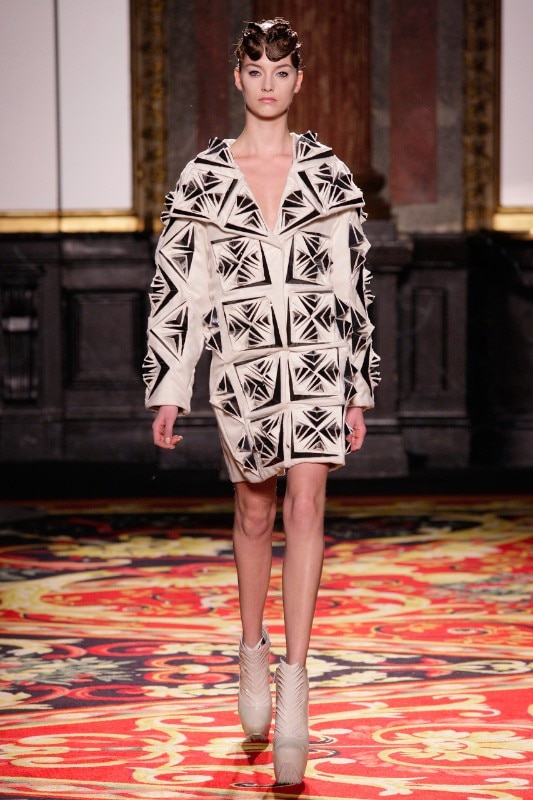
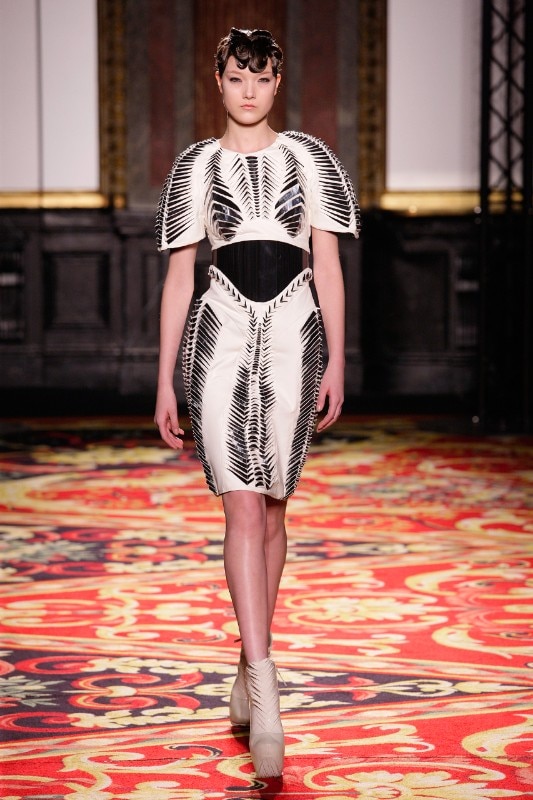
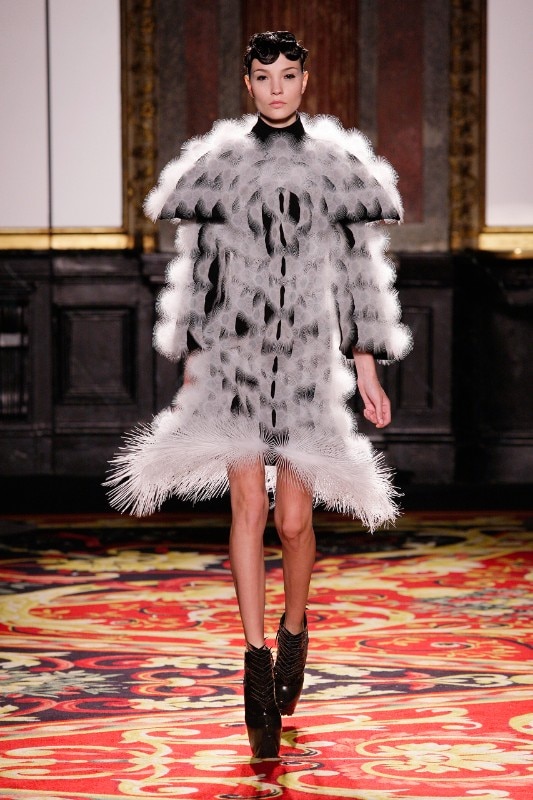
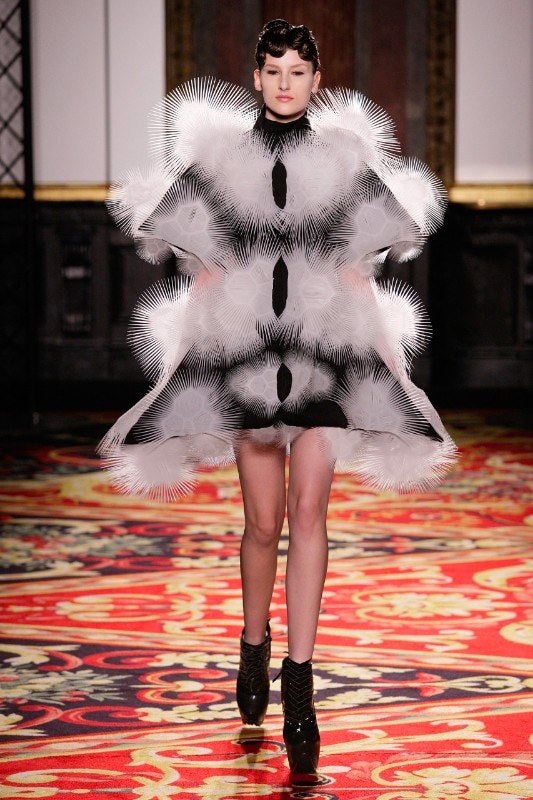
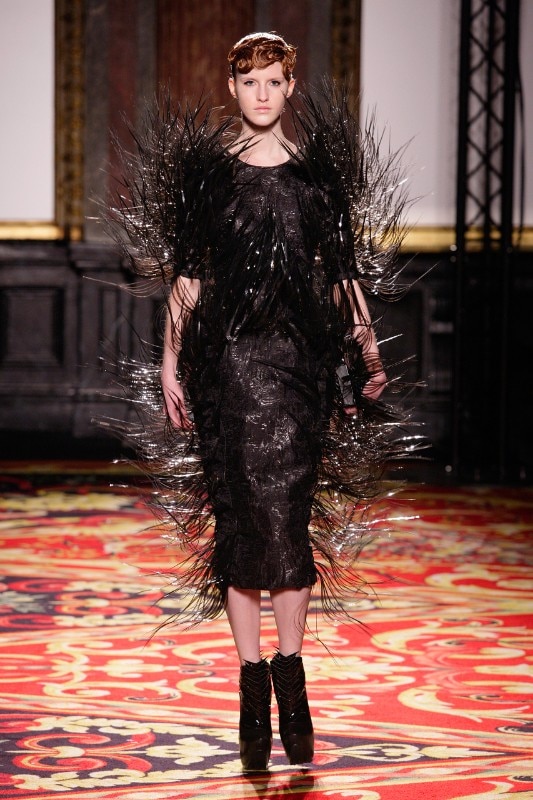
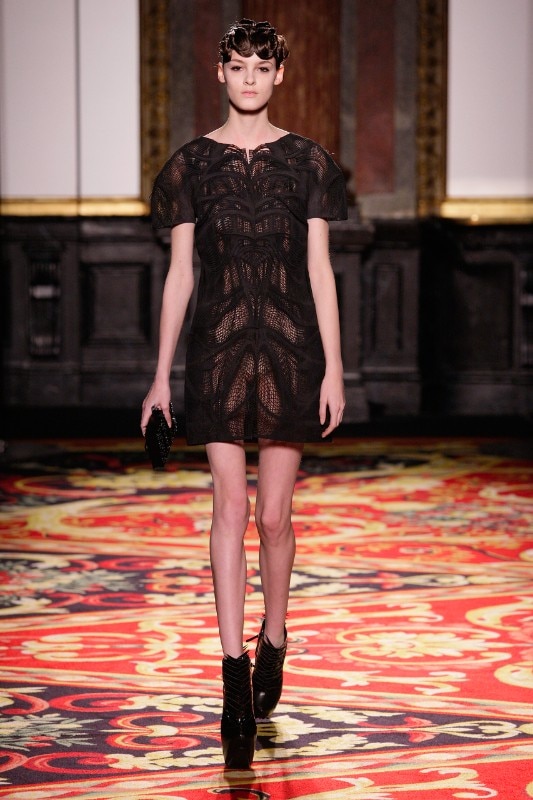
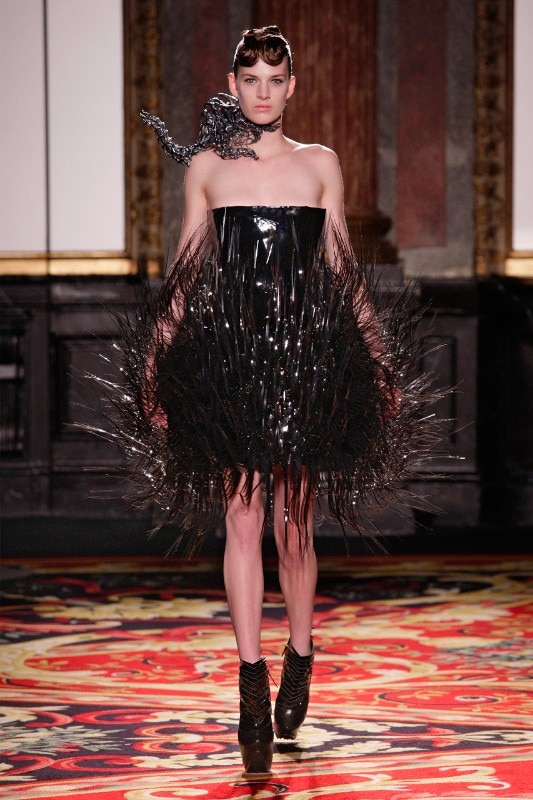
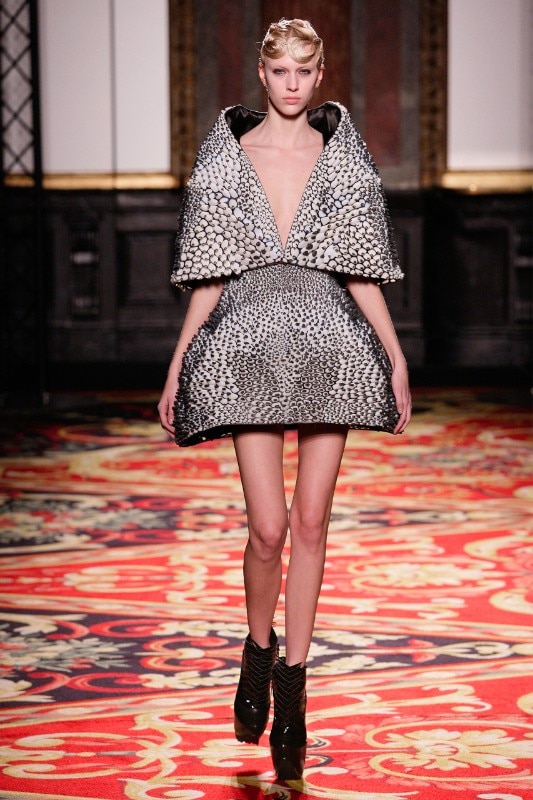
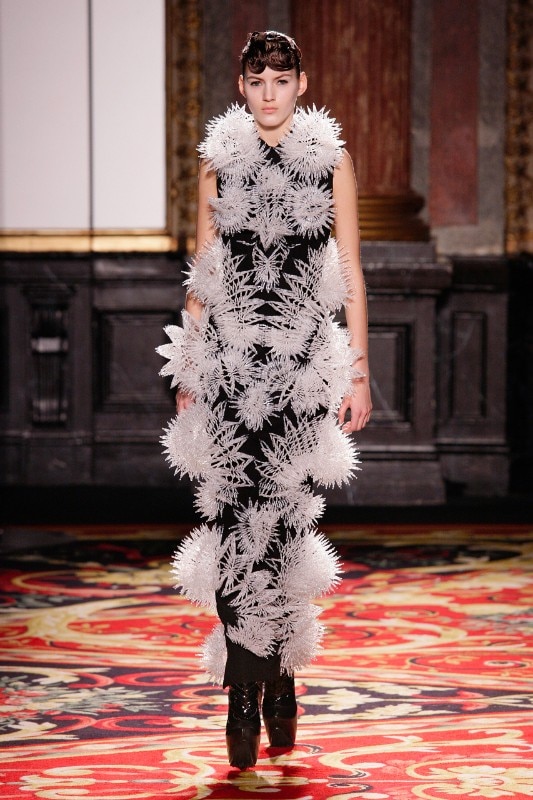










Iris van Herpen’s Voltage clothing collections, made with Neri Oxman and Julia Koerner using additive manufacturing, turn garments into bodily extensions reminiscent of biomimicry – the skeleton of a living being, or the shell of a crustacean. From fashion design to wearable design, we are seeing increasingly sophisticated studies of active functions and interaction. Experimentation with non-fabric materials and new production techniques such as 3D printing with powder or filaments is being conducted by Anouk Wipprecht, who calls her designs FashionTech. Using additive manufacturing, her performative dresses are futuristically coupled with digital technology. Looking like exoskeletons, they are equipped with connective and computational devices, energy and light sources. They are structural, active garments (see Wipprecht’s Spider Dress) whose sensors perceive the surroundings and whose actuators make the accoutrements react.
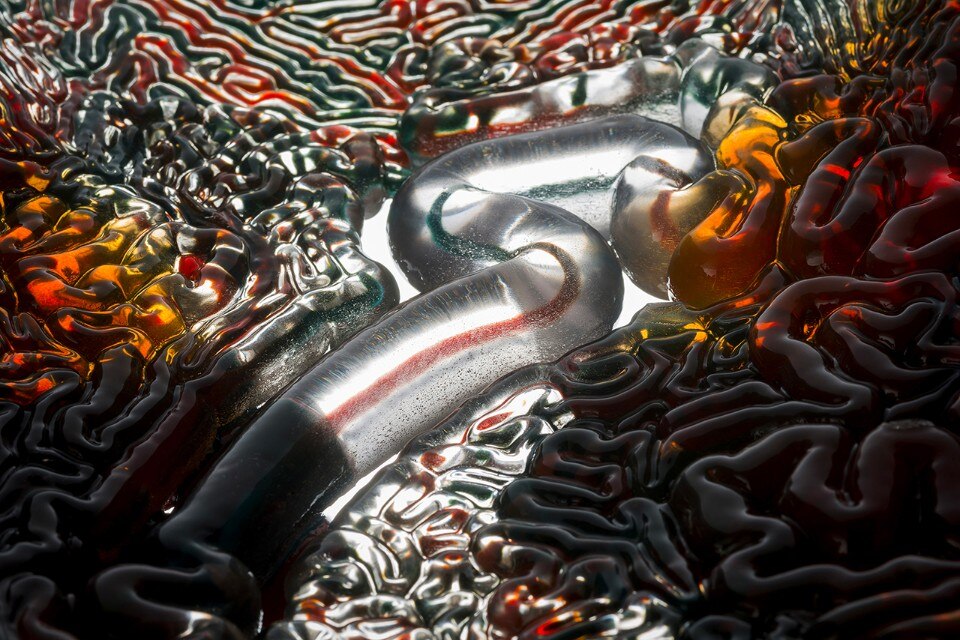
A blend of these two evolving lines of research on materials, shapes and production processes is the key trait of work by Neri Oxman, who imagines their convergence as Material Ecology, a term she coined to describe her research area. Oxman considers computation (the generation of form), fabrication (the digital and biological materialisation process) and material to be the constituents of a new approach to design that can be used on all scales. One example of this blend is her Mushtari object, a sort of wearable organ or prosthesis that imitates the structure of human intestines. Inside, modified bacteria activated by sunlight transform biomass into consumable sucrose.


